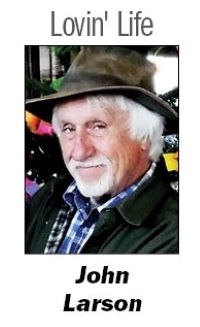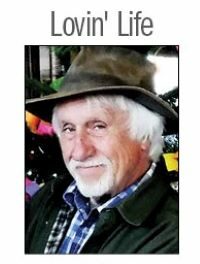
As anyone here can attest, the more you see, you see there is more to see … quote-unquote. From the Quebradas and Grumble Gulch on the east side to the San Mateos and the VLA on the west, and everything in between, it must be said that this is a pretty amazing and beautiful county.
But there are a few things that didn’t quite make it into the Source. One of my favorite little spots is the Santo Nino de Atocha shrine at around mile marker 132 on Highway 60. The Child of Atocha is the protector of travelers, rescuer of those in peril, and patron saint of those unjustly imprisoned.
And now and then, someone comes in asking about the specific location of the unidentified thing reported by police officer Lonnie Zamora in 1964. Locals know it’s in an arroyo sort of behind the high school, but it seems people who are most curious about it are from somewhere else, like the guy I met visiting from England a while back. It was his first time in New Mexico and all he wanted to know about were all the UFOs. “Where are all these UFOs I’m hearing about?” he wanted to know, and I’m just shrugging.
But of course, everything is not lollipops and roses and I’ve heard some call the Land of Enchantment “The Land of Entrapment,” although I’m not sure exactly what that means.
Although most feel it’s a privilege to live here, there are some who decide to leave the city and start a little homesite on a piece of land off the beaten track who may not realize the realities, so to speak.
For them, there’s the Code of the West that was approved by the Socorro County Commission back in 2005.
This unique document describes some of the realities of owning rural property, both positive and negative for those considering buying property and living where the deer and the antelope play. It’s a heads-up for newcomers on what to expect.
While extolling the beauty of Socorro County, the Code of the West outlines some of the grim realities.
“Life in the country is rich and rewarding, treasured by both Socorro County residents who have been here for generations, and those who have recently moved here,” it states. “It is important for new residents to know that life in the country is different from life in the city. County governments are not able to provide the same level of service that city governments provide.”
Here are a few examples:
- The water flowing in irrigation ditches belongs to someone. You cannot assume that because the water flows across your property, you can use it.
- Emergency response times cannot be guaranteed, especially on roads within rural subdivisions that may not be maintained as often as others.
- New Mexico has an open-range law. This means if you do not want cattle, sheep or other livestock on your property, it is your responsibility to fence them out. It is not the responsibility of the rancher to keep his/her livestock off your property.
- You are responsible for keeping your dog on your own property. New Mexico law allows the shooting of dogs when they kill, injure, or chase livestock or wildlife.
- Water, sewer, electricity, telephone, internet, and other services may be unavailable or may not operate at urban standards. Repairs can often take much longer than in towns and cities.
- Residents of the county usually experience more problems when the elements and earth turn unfriendly. Spring run-off can cause a very small arroyo to become a major river. Many residents use sandbags to protect their homes. The county does not provide sandbags, equipment, or people to protect private property from flooding.
- Nature can provide you with some wonderful neighbors. Most, such as deer and eagles are positive additions to the environment. However, even “harmless” animals like deer or elk can cross the road unexpectedly and cause traffic accidents.
- Unpaved roads generate dust, dust is still a fact of life for most rural residents. Well, yeah…
The Code of the West may be off-putting to many, but maybe folks just don’t want to see a surge of people moving here and messing up the scenery, so to speak.
The entire 11-page document can be viewed on the web on the county’s resolutions page.
Now, can somebody point me the way to Grumble Canyon?

















